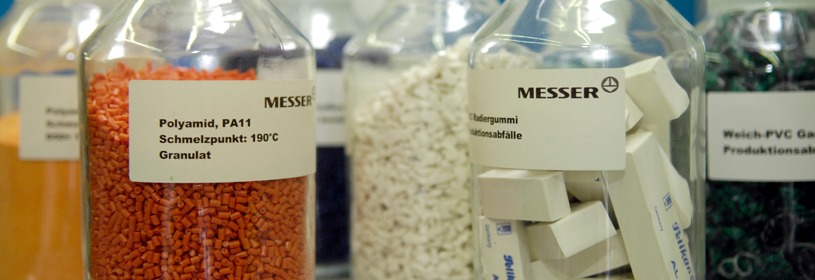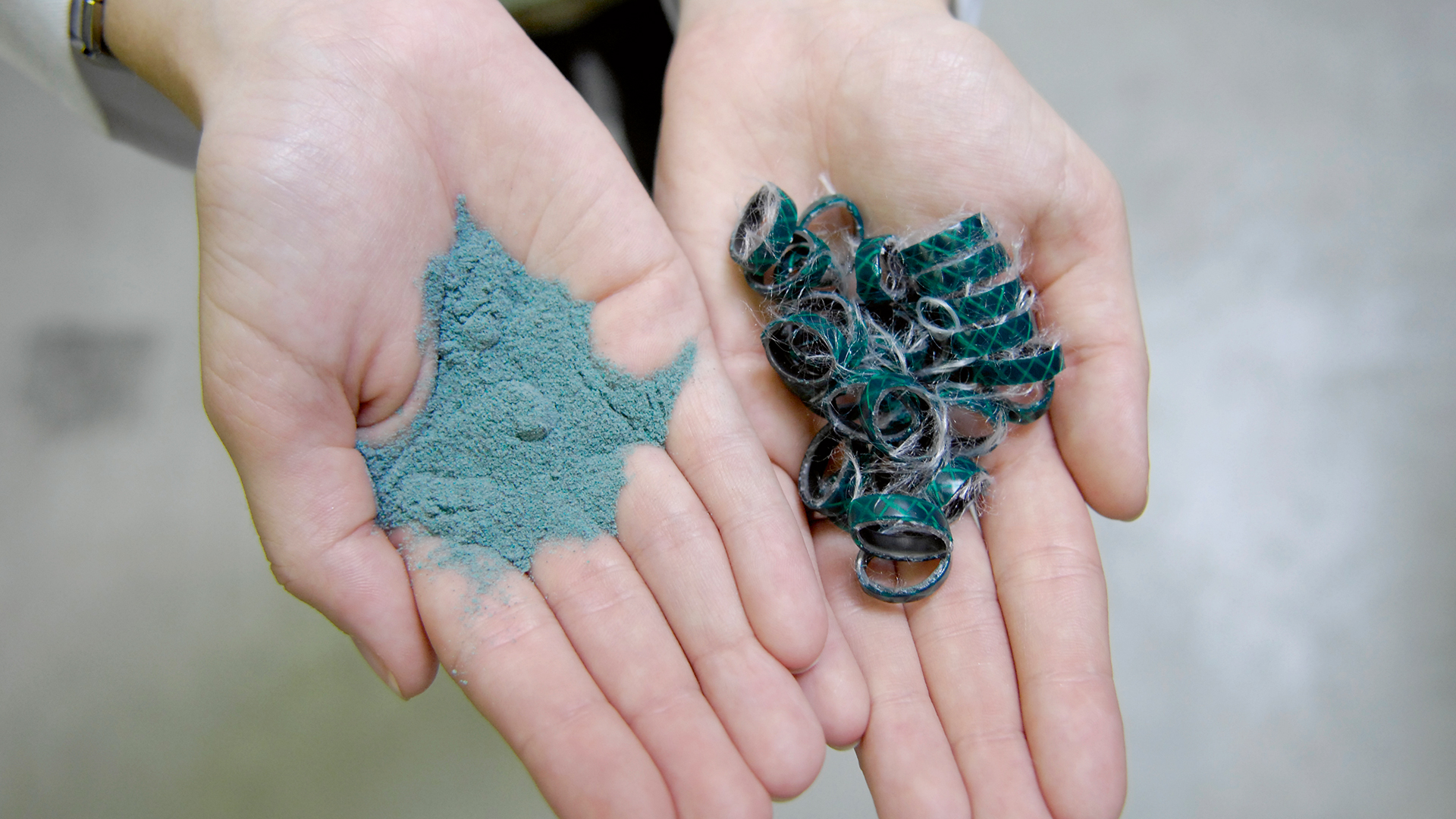Why rely on cryogenic grinding of regrinds?
Materials such as polymers, elastomers, waxes, paint additives and pharmaceuticals cannot be used efficiently until they are in powder form for further processing. However, the process of comminuting the regrind sometimes proves to be a problem, as many materials have a high temperature sensitivity and tend to melt. In the case of spices, aroma and flavors can be lost due to the high temperatures involved in the grinding process. To prevent these negative consequences with soft, flexible or oily materials, cryogenic grinding is brought to bear.
Cold grinding - cryogenic grinding to maintain product quality
In the process of cold grinding, the Messer Group relies on innovative grinding plants with paddle screw coolers and on the supply of cryogenic liquid nitrogen or carbon dioxide. When the cold is supplied, the material properties of the regrind change. It becomes hard and brittle, which enables fine grinding of different materials. Cooling with cryogenic gases prevents a rise in temperature, which protects heat-sensitive materials in particular. Product quality can be maintained throughout the process, and mill throughput can also be significantly increased.
Which materials can be processed in cold grinding?
● Thermoplastics such as PA, EVA, TPU, PVC, PS, PE and PP
● Rubber or elastomers such as EPDM, SBR, NBR, FKM
● Waxes
● Spices such as nutmeg, pepper, ginger, cardamom or cloves
● Pharmaceuticals
What are the advantages of cryogenic grinding?
● high throughput of the regrinds
● large proportion of fine or ultra-fine material
● lower specific energy requirement
● no melting and sticking of temperature-sensitive plastics
● no thermal damage
● retention of aroma substances during spice grinding
● high protection against dust explosions
Cold grinding with Messer
The Messer Group operates a highly specialized test facility that offers the opportunity to benefit from process developments, estimate production costs or produce sample batches. Qualified sample grinding is carried out using liquid nitrogen. All grinding parameters such as throughput rate, power and nitrogen requirements as well as particle size distribution are measured, evaluated and made available to the customer. The results obtained can be transferred to large-scale production. It is also possible to optimize existing mills at the customer's site. Granulate coolers (paddle screw coolers), nitrogen control valves and temperature control equipment can be provided for on-site trials on these plants. h2>What is meant by cryogenic recycling? The grinding of rubber materials (rubber recycling) or soft PVC parts (PVC recycling) or other thermoplastics often proves to be very costly in practice. With Messer’s cryogenic recycling, cold liquid nitrogen is fed to the pre-shredded mono batches. As a result, the feed material becomes particularly hard and brittle, making it possible to grind even difficult and tough materials with excellent results. Due to the different expansion coefficients of composites, stresses occur at the composite boundary as a result of the cooling. Therefore, cryogenic grinding technology (powder manufacturing) allows even fiber- or metal-reinforced thermoplastics and galvanized plastic parts to be broken down into their constituent parts or freed from accompanying materials with relatively little energy input.
Advantages of cryogenic recycling
- By adding liquid nitrogen, the regrind becomes brittle and the grinding process is facilitated.
- Low energy consumption is required for cryogenic grinding technology.
- Cryogenic grinding facilitates the separation into individual components and the liberation of accompanying substances.
- The flammability of ingredients in battery recycling is contained in cryogenic recycling.
Cryogenic recycling with Messer
Messer operates a highly specialized test facility that offers the opportunity to benefit from process developments, estimate production costs or produce sample batches. Separation and recycling tests can be carried out here using liquid nitrogen or other industrial gases. All relevant parameters such as separation efficiency, electricity and gas consumption as well as throughput are measured, evaluated and made available to the customer. Existing plants at the customer's site can also be optimized. Granulate coolers (paddle screw coolers), nitrogen control valves and temperature control devices can be provided for carrying out tests on these plants on site.
Why rely on cold grinding for spices and food?
In the food industry and in further processing, many spices such as pepper, cinnamon, cumin, cardamom or cloves as well as other food products have an optimal use in powder form. During comminution processes such as cutting, impacting and grating, depending on the strength, hardness and elasticity of the spices and foodstuffs, high temperatures are generated by the grinding energy introduced, leading to sticking of sensitive and oily substances. Aromas and flavors can also be lost as a result. With the cold grinding process (cryogenic grinding), the products are gently ground and a higher proportion of the essential oils is retained. Product quality is maintained throughout the entire process.
Grinding spices: How does cryogenic grinding work?
Mill cooling uses liquefied cryogenic nitrogen (LIN) or liquid carbon dioxide (LCO2) to significantly reduce the temperatures of the feed material. Cryogenic grinding with in a paddle screw cooler freezes the high fat or oil content in the regrind and makes it brittle. The spices and foodstuffs remain free-flowing and are much easier to grind. Cold grinding avoids the undesirable rise in temperature caused by the electrical energy of the mill motors and ensures high product quality. Valuable ingredients, such as essential oils or vitamins, remain contained in the regrind.
Advantages of cold grinding of spices and food
- Good grindability of products with a high content of oils, fats and moisture.
- The grounded material remains free-flowing, the machine does not stick.
- No thermal damage due to overheating of temperature-sensitive substances.
- The essential oil content remains almost unchanged and intact.
Cold grinding of spices with Messer
The cold grinding process for spices and foodstuffs used by Messer can ensure very high quality in the comminution process. The Messer Group operates a highly specialized test facility which offers the possibility to benefit from process developments, to estimate production costs or to produce sample batches. Qualified sample grinding is carried out using liquid nitrogen. All grinding parameters such as throughput rate, power and nitrogen requirements as well as particle size distribution are measured, evaluated and made available to the customer. The results obtained can be transferred to large-scale production.




